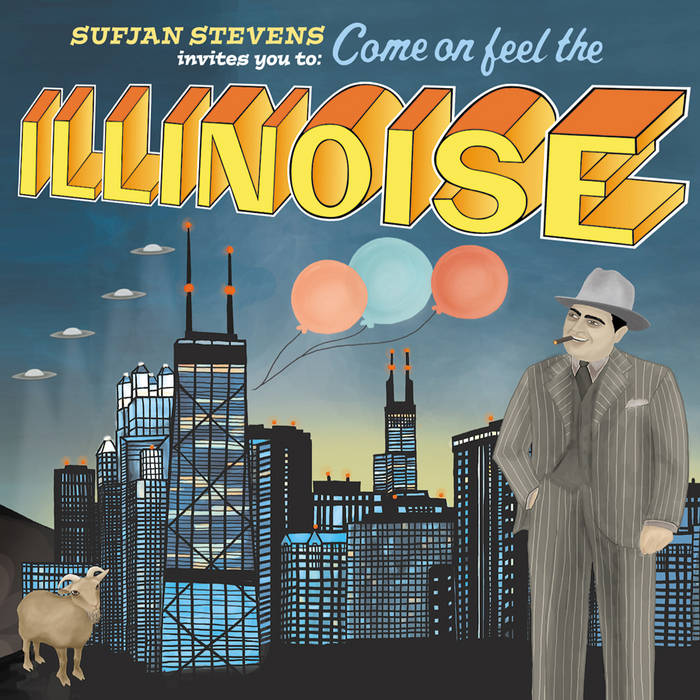Jimi Hendrix. Robert Johnson. Jim Morrision. Janis Joplin. Kurt Cobain. Amy Winehouse—all talented artists, all dead by the age 27. Though heavy drug and alcohol abuse are a likely explanation for their untimely demise, the similarities in the artists’ tumultuous lives and in their sudden deaths are too uncanny. They’ve become part of a sardonic euphemism–the 27 Club.
The Chicago Cultural Center takes a singular look at this club in its new exhibit, Forever 27: Music Superstars Gone to an Early Grave, part of Project Onward Gallery, an organization dedicated to mentoring artists with mental and developmental disabilities. An upcoming exhibit at the Cultural Center called Morbid Curiosity: The Richard Harris Collection (opens Jan. 28th) served as the inspiration for Forever 27. Five artists pay tribute to the musicians through artwork of various mediums.
David Holt also portrays Jimi Hendrix, on a canvas with acrylics. In the portrait, Hendrix holds his famous guitar behind his shoulders. He’s also wearing a headband with the words “Purple Haze” written across. Simply drawn, it’s evident that Holt drew Hendrix as he imagines him, not so much as Hendrix actually was in photos and films.
Adam Hines’ sketch of Ron “Pigpen” Mckernan (1945-1972), founder of the Grateful Dead, is the most interesting tribute to the group. Using colored pencil, Hines writes scattered fragments, scrawls and symbols on the mostly white picture. Phrases like “Special Tribute,” “Turn on Your Love Light,” and “#1” are scribbled over it and the pictures include a peace sign and a skeleton with hair–fitting for the founder of The Grateful Dead.
Unlike the previous two artists, George Zungia depicts Kurt Cobain (1967-1994) more classically. The blond Cobain sports a dark five o’clock shadow with a blank stare–but his facial features are lopsided and disproportionate. Disfiguring Cobain’s face, highlights his tortured soul. The text panel with Cobain’s biography complements the painting. It recounts his heroin addiction, alcoholism, depression, and struggles with the pressure of being the frontman of Gen X’s flagship band. Zungia does an excellent job conveying those struggles in the portrait, representing Cobain as angry and troubled through the painting’s disproportions.
Just sixteen days after Jimi Hendrix, Janis Joplin (1943-1980) died of a heroin overdose. In addition to being a singer, Joplin was a beatnik poet and artist. David Holt painted an acrylic of a gangly Joplin with the word “Piece of my Heart” adjacent to her. Joplin acolytes know that “Piece of my Heart” is a song that she covered with her band, Big Brother and the Holding Company. She completely re-did the vocal arrangement and turned it into a blues song. Holt’s decision to choose that particular song becomes all the more significant; it’s one of the songs that earned her the title of “Queen of Rock n’ Roll and Psychedelic Soul.”
Fernando Ramirez’s painting of Jim Morrison (1943-1971) is the most traditionally beautiful of all the portraits on display. Painted in stunning acrylic, Morrison sits up in a partially open coffin which also serves as a table. Pen in hand, Morrison appears to be writing the lyrics, “This is the end, / Beautiful friend, / This is the end, / My only friend, the End.” from The Door’s song “The End.” Above him, purple clouds open to the sky, and a rose, lizard, nude angel, cigarette, flaming disc, and flask surround him. Each of those items represent certain aspects of Morrison’s songwriting. It’s a fitting tribute.
In October 2006, Amy Winehouse (1983-2011) claimed “they tried to make me go to rehab, but I said ‘no, no, no,” in what readily became one of her most popular singles. Five years later, she died of alcohol poisoning. Sereno Wilson, known for his glitter art, makes a sparkling and colorful representation of the late Winehouse. Even with gold glitter tresses, the flower in her hair and mole above her mouth make the portrait unmistakably Winehouse.
In their tributes to these six musicians, the artists seem to reflect on each artists’ legacy. It’s a touching gesture, one that would be better served with a larger venue.








